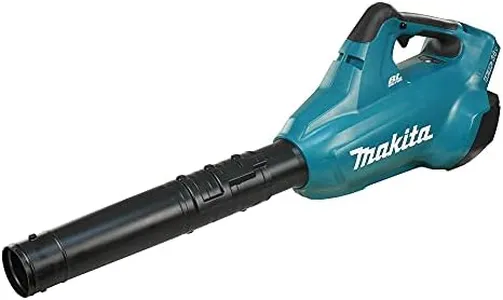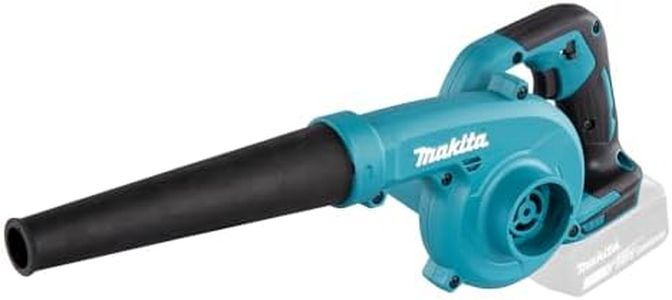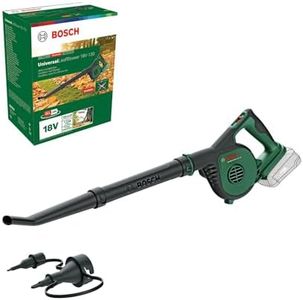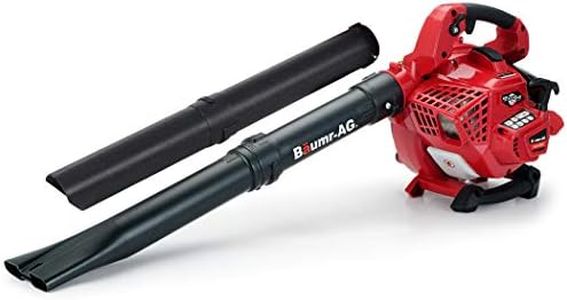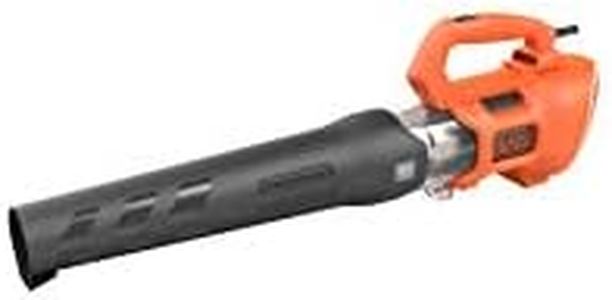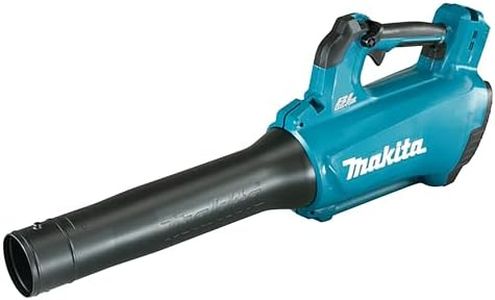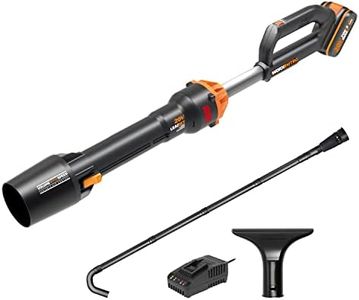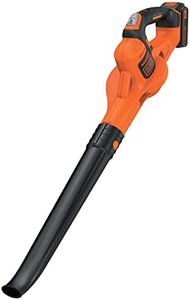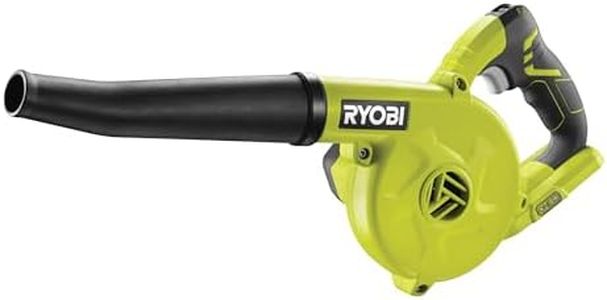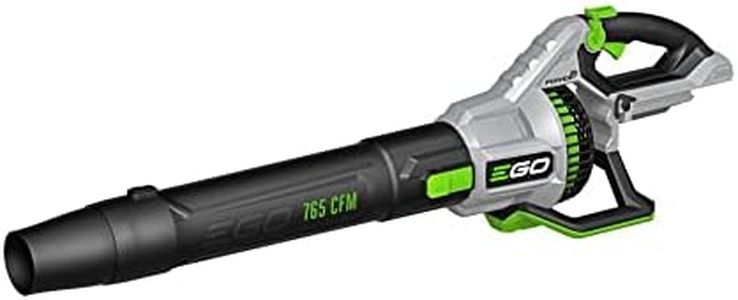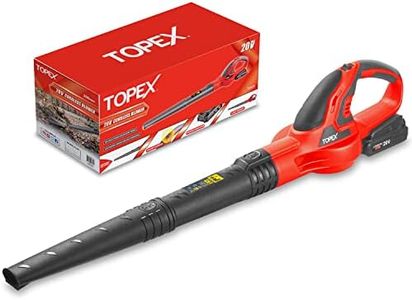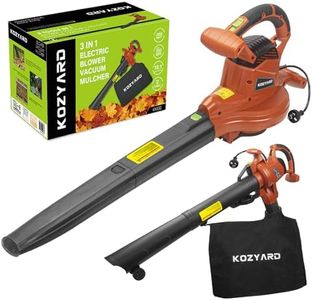We Use CookiesWe use cookies to enhance the security, performance,
functionality and for analytical and promotional activities. By continuing to browse this site you
are agreeing to our privacy policy
10 Best Leaf Blower And Vacuums
From leading brands and best sellers available on the web.Buying Guide for the Best Leaf Blower And Vacuums
Leaf blowers and vacuums are popular tools for keeping outdoor spaces tidy by moving or collecting leaves, debris, and even light trash. Choosing the right one depends on your yard size, the type of debris you'll be handling, and your comfort with handling various equipment. Understanding the key features will help you match a tool with your specific needs, making the job easier and more efficient.Power SourceThe power source describes how the leaf blower or vacuum is fueled—commonly electric (corded), battery (cordless), or gas-powered. Corded electric models are best for small to medium yards near power outlets, offering consistent power without needing to refuel. Cordless battery models provide mobility without cords but operate for a limited time before needing a recharge and may have less power than plug-in types. Gas-powered models are usually the strongest and most suitable for large properties or heavy-duty tasks, but they are heavier and require more upkeep. Decide based on your yard size, desire for mobility, and tolerance for maintenance.
Air Speed (MPH)Air speed, measured in miles per hour (MPH), indicates how quickly air is expelled from the machine and affects how forcefully you can move leaves and debris. Lower air speeds (up to 150 MPH) may be fine for light, dry leaves on hard surfaces, while medium speeds (150-200 MPH) are suitable for general use on lawns and mixed debris. High speeds (over 200 MPH) are better for stubborn or wet debris and larger spaces. Match the air speed to the difficulty of your clean-up tasks—the more challenging the debris, the more speed you may need.
Air Volume (CFM)Air volume, measured in cubic feet per minute (CFM), shows how much air the machine moves. This affects how efficiently you can cover larger areas and gather bigger piles. Lower CFM (under 300) tends to be adequate for light cleanup tasks, medium CFM (300-500) offers good all-purpose performance, and high CFM (500+) is best for big yards or thick piles of wet leaves. If you have a big space with lots of debris, lean toward higher CFM for easier and faster work.
WeightThe tool’s weight can make a big difference during longer jobs. Lightweight models (under 8 pounds) are easier to handle, especially for people who may have less strength or need to maneuver the tool a lot. Medium weight (8-12 pounds) strikes a balance for most users, and heavier options (above 12 pounds) are often gas-powered and can cause fatigue. Consider how long and often you’ll use the tool—choose a weight that feels comfortable for you to operate.
Mulching RatioThe mulching ratio, usually written as something like 10:1 or 16:1, indicates how much the tool can reduce the volume of leaves when vacuuming. A higher ratio means the machine shreds leaves into much smaller pieces, so you need to empty the bag less often. This is important if you have a lot of leaves to pick up and want to minimize trips to the compost or trash. Pick a higher mulching ratio if you want to maximize bag capacity and reduce disposal work.
Noise LevelNoise level, often measured in decibels (dB), tells you how loud the tool will be during use. Quieter models (under 65 dB) are more neighbor-friendly and suitable for those sensitive to noise, while louder models may move more air but can disturb people and pets. If you live in a noise-restricted area or value peace and quiet, prioritize quieter options.
Vacuum and Blower ModesSome machines are designed only for blowing leaves, while others add vacuum and mulching features. If you need to pick up leaves or debris, look for a model with both blower and vacuum functions. Switching between these modes should be quick and convenient. Decide if you mostly need to move debris or collect and dispose of it, and choose a type that gives you the required functionality.

